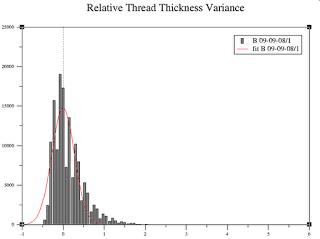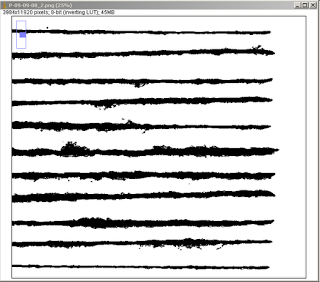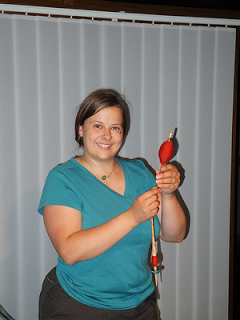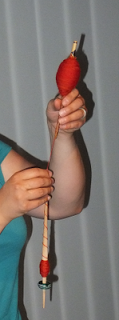A while ago, I wrote a teaser post about a plying technique that I wanted to write about - and then I almost forgot I promised you a follow-up post.

While most of the ladies on medieval images have a long distaff that clearly holds fibres, like this:
 |
| Psalter of Fecamp. Ca. 1180. From Petzold, Andreas. Romanische Kunst, art in context. Köln: Dumont, 1995, p. 97. |
and some fewer ones have a short distaff that also clearly holds fibres, like this:
 |
| Detail from Giotto: Annunciation to St. Anna. Scrovegni-Chapel, Padua. 1300-1320. From Flores d'Arcais, Francesca. Giotto. New York: Abbeville, 1995, p. 150. |
something about this picture has always sort of tickled the back of my brain.
 |
| Young woman, Pseudo-Apuleius, 13th century. Vienna, Österreichische Nationalbibliothek, Cod. Vind. 93. From Kotzur, Hans-Jürgen. Hildegard von Bingen 1098-1179. Mainz: Verlag Philipp von Zabern, 1998, p. 336. |
It's not the usual what she's holding; it's clearly a shorter distaff than usual, and the form of the stuff on the distaff is very clearly defined, very spindle-shaped and not fibery-looking at all.
Let's jump to another topic: the problem of plying. I don't know how well you manage to spin the same amount of length on two spindles or spools - I don't manage so very well; there's always some of the yarn left on one side when the other side has already run out. There's a theoretically very easy way to avoid this, though: To fold the yarn spun in half (from one single spindle, spool, or cop) and ply it with itself. When there isn't a foulup, you end up with a neat two-ply with no singles left.
There are different instructions on the 'Net on
how to ply from a center-pull ball, and there's also the
Andean Plying Bracelet which both are means to achieve the desired end-result: a skein of single folded in half and plied up. Both involve re-winding the spun yarn from the bobbin of a spinning wheel (where it's an absolute necessity) or from a spindle.
Me, I'm lazy. I like to be lazy. I promote winding spindles in a special way so that I can, after spinning, just slide that cop of yarn off the spindle onto a slim bit or stick of wood or so for storage. (Chopsticks, by the way, work fine.) And the way that I wind my yarn results in a stable, spindle-shaped cop of yarn that is essentially something not too unlike a center-pull ball. So I tested plying directly from the cop (transferred to a slim stick) onto the spindle... and it works, and very very well too.
There's me doing it...
... and a close-up with a slightly different hand position that occurs quite frequently during the process.
So... here's a method that is efficient, easy to use, will result in no waste of yarn singles, and does not require extra tools (you can use a spindle stick to ply from). And I'm hooked on this new technique.











